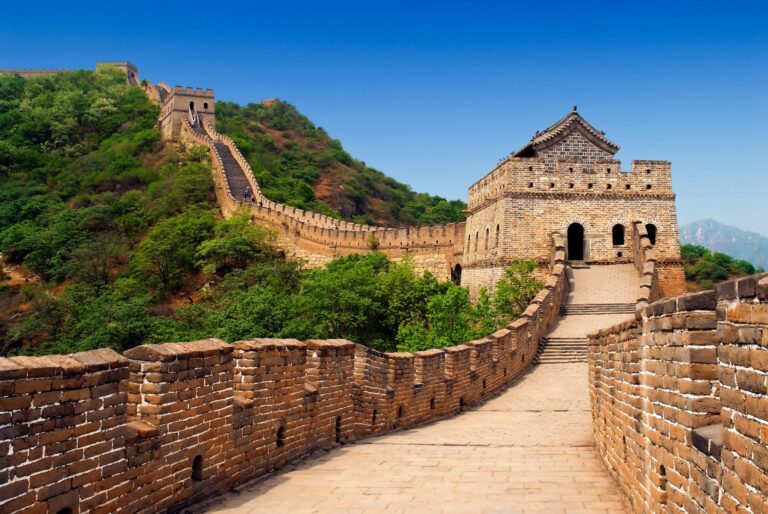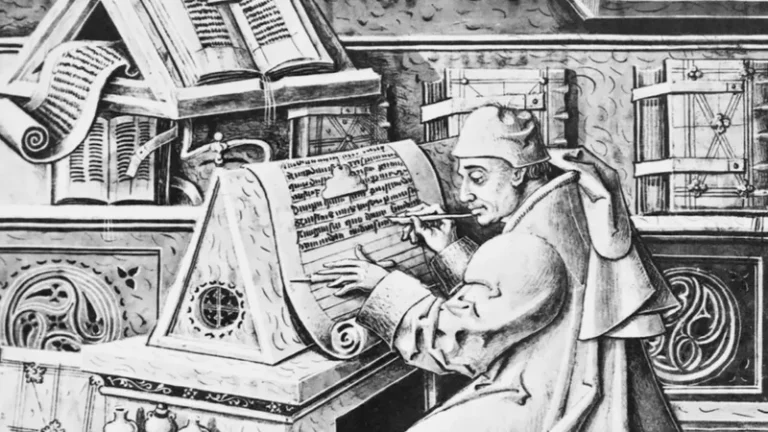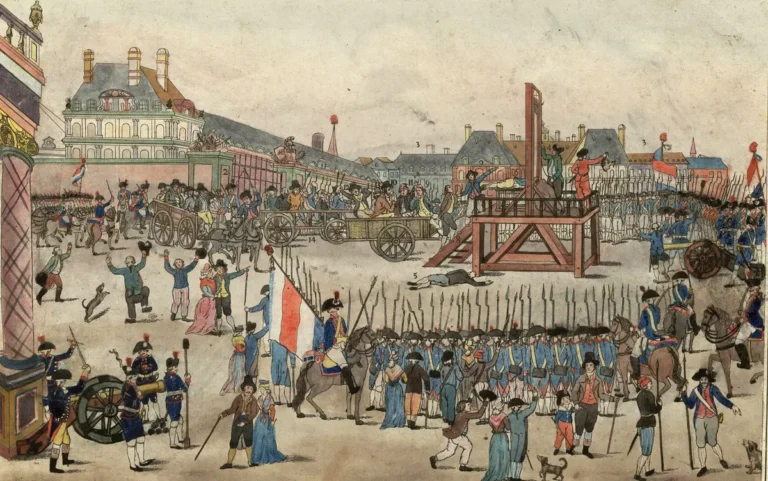Unleashing the fury of war, nations have repeatedly reshaped the world’s borders, ideologies, and cultures. The tremors of these conflicts have reverberated through time, influencing the course of history in profound ways. This piece seeks to dive into the throes of these cataclysmic wars and reveal their enduring impacts.
Historical wars, often characterized by their staggering human cost and strategic brilliance, have left indelible marks on the tapestry of global civilizations. Yet, the cataclysm they unleash is not confined to their timeline alone. The ripple effects penetrate deep, altering the course of nations and societies for generations to come.
The exploration begins with the Peloponnesian War, a civilizational battle of ideologies that set the stage for the rise and fall of empires. Further, it travels through the chronicles of the Hundred Years’ War, highlighting the birth of national identities. It continues with the transformational impacts of World War I & II, which engineered a geopolitical reshuffling and precipitated the Cold War’s ideological standoff.
The narrative then delves into more recent conflicts, such as the Vietnam War and the Gulf War, underscoring the emergence of new warfare strategies and the convolutions of modern geopolitics. The analysis reveals how these wars have irrevocably transformed the world, influencing national borders, socio-political ideologies, and even our shared understanding of humanity.
By examining these seismic events, we aim to offer a comprehensive understanding of how warfare has persistently sculpted the contours of our world. This exploration is not merely about war but the transformational chaos they unleash – chaos that has invariably altered the course of history forever. Brace for a riveting journey through time as we navigate the labyrinth of history’s most influential wars.
The American Civil War: Technological Innovations That Changed Warfare
The American Civil War, which raged from 1861 to 1865, was not only a defining conflict in the history of the United States but also a turning point in the evolution of warfare itself. Often referred to as the first “modern war,” it witnessed a convergence of industrialization, emerging technologies, and shifting military doctrines that would lay the foundation for future conflicts across the globe. The innovations introduced during this war drastically altered both the tactics on the battlefield and the broader strategic approach to war.
:max_bytes(150000):strip_icc()/Bull_Run_2_Railroad-be822861631f448d9fa7825c3c3251ee.jpg)
One of the most impactful technological advancements was the widespread adoption of rifled muskets. Unlike the smoothbore muskets of earlier eras, which were inaccurate and required close-range volleys to be effective, rifled muskets featured spiral grooves inside the barrel that imparted a spin to the bullet, increasing both range and accuracy. These weapons allowed soldiers to hit targets from much greater distances—up to 300 yards or more—which rendered traditional Napoleonic-style line infantry tactics dangerously outdated. Marching in dense formations across open fields became a death sentence, as defenders could now inflict severe casualties long before the enemy reached effective attacking range. This shift necessitated the use of trenches, skirmish lines, and defensive fortifications, foreshadowing the static and grueling nature of trench warfare seen in World War I.
In addition to advancements in small arms, the Civil War also marked the dawn of modern naval warfare, most notably with the introduction of ironclad warships. These vessels, clad in iron or steel armor plating, revolutionized naval combat by rendering traditional wooden ships largely obsolete. The historic clash between the Union’s USS Monitor and the Confederacy’s CSS Virginia (formerly Merrimack) in 1862 was the first meeting of ironclads in combat, and though the battle itself ended in a tactical stalemate, it signaled a paradigm shift in naval engineering. The age of wooden navies was over, and the arms race for more heavily armored, steam-powered warships had begun.
The Civil War was also one of the first conflicts to integrate railroads and the telegraph into military strategy. Railroads allowed for rapid troop and supply movement, enabling commanders to reinforce positions or redeploy forces over long distances far more efficiently than ever before. The Union’s superior rail network played a vital role in its strategic mobility. Meanwhile, the telegraph provided near-instantaneous communication between distant military commands and political leaders, reshaping command and control structures. For the first time, generals and even presidents could relay orders and receive updates in real time, making military campaigns more responsive and coordinated.
Another innovation of significance was the use of aerial reconnaissance via hot air balloons. Though rudimentary, these balloons provided Union forces with valuable intelligence by offering elevated views of enemy movements and battlefield layouts. Operated by the Union Army Balloon Corps, these early forays into aerial surveillance represented a precursor to the use of aircraft in modern warfare.
Furthermore, the Civil War saw developments in logistics, medical care, e weapon manufacturing that reflected the influence of the Industrial Revolution. The Union’s industrial capacity enabled the mass production of standardized weapons, uniforms, and equipment. Innovations in ammunition manufacturing and the introduction of repeating rifles, such as the Spencer and Henry rifles, also enhanced individual firepower on the battlefield. On the medical front, the war spurred the creation of organized ambulance services, field hospitals, and the professionalization of military medicine, although conditions remained harsh and survival rates low.
In sum, the American Civil War was far more than a domestic struggle—it was a proving ground for new technologies and doctrines that would echo through the next century of warfare. The conflict foreshadowed the mechanized, industrial nature of future wars, bridging the gap between the era of swords and muskets and the dawn of machine guns, armored vehicles, and modern communication systems. The innovations born from this brutal conflict demonstrated how technology could shape the very nature of war, turning age-old strategies on their head and forever transforming how humanity fights its battles.
Impact of the Industrial Revolution on Warfare
The Industrial Revolution also played a significant role in transforming the nature of warfare during the American Civil War. For the first time, industrial scale production of weapons, ammunition, and other war materiel became a decisive factor in the outcome of the conflict.
The North’s superior industrial base allowed it to produce weapons, clothing, and food at a scale that the agrarian South simply couldn’t match. This disparity in production capacity played a crucial role in the Union’s eventual victory.
The First World War: The Dawn of Modern Warfare
The First World War, which lasted from 1914 to 1918, represented a seismic shift in the nature of warfare, ushering in an era of unprecedented technological complexity and industrial-scale conflict. Often referred to as the first “total war,” it involved entire nations mobilizing not only armies but also economies, industries, and civilian populations in a concerted war effort.
One of the most significant innovations of this era was the advent of mechanized warfare. The introduction of the British Mark I tank in 1916 marked a turning point in battlefield dynamics. As the first fully tracked and armored fighting vehicle used in combat, the tank was designed to navigate the treacherous terrain of no man’s land, crush barbed wire defenses, and withstand small arms fire. Though initially slow and mechanically unreliable, tanks demonstrated the potential to break the stalemate of trench warfare, and their psychological impact on enemy troops was profound.
Equally transformative was the widespread use of aircraft. Though still rudimentary, early reconnaissance planes, fighter aircraft, and bombers redefined the battlefield by introducing a third dimension to warfare. Control of the skies became a new strategic objective, paving the way for the development of airpower as a central pillar of military strategy in future conflicts.
Chemical Warfare: A Dark Chapter in Military History
One of the darkest chapters of the First World War was the introduction of chemical warfare. Both sides employed a variety of poisonous gases, including chlorine and mustard gas, to inflict horrific casualties on their enemies.
This inhumane form of warfare caused widespread suffering and death, and its use marked a grim milestone in the history of conflict. Despite attempts to ban the use of chemical weapons, they have unfortunately been employed in several conflicts since.
World War II: The Atomic Age and Total War
World War II, which spanned from 1939 to 1945, was the most destructive conflict in human history, involving over 100 million people from more than 30 countries. This global war saw the introduction of several groundbreaking technologies, most notably the atomic bomb, which redefined the scale of destruction possible in modern combat.

The bombing of Hiroshima and Nagasaki in August 1945 marked the first and, to date, only use of nuclear weapons in warfare. The unprecedented explosive power of these weapons caused immense devastation, instantly killing tens of thousands and exposing many more to long-term radiation effects. Their use ushered in the atomic age, fundamentally altering military strategy, global diplomacy, and ethical debates around warfare.
The Advent of Total War
World War II also marked the first truly global conflict, with battles fought on nearly every continent and involving the vast majority of the world’s nations. This war was characterized by a significant shift towards total war, in which the entire economic, industrial, and human resources of the countries involved were mobilized and directed toward achieving military victory.
Total war also involved the systematic targeting of civilian populations, not only through extensive strategic bombing campaigns—which devastated cities like London, Dresden, and Tokyo—but also through horrific acts of genocide, most notably the Holocaust, in which six million Jews, along with millions of others, were systematically murdered. This tragic chapter in human history underlined the devastating potential of modern warfare, where the lines between combatants and civilians were increasingly blurred, and where destruction was not just a byproduct, but often a calculated objective.
The Cold War: A New Kind of Conflict
The Cold War, which lasted from the end of World War II until the dissolution of the Soviet Union in 1991, represented a new kind of conflict. While no direct military clashes occurred between the two superpowers, the United States and the Soviet Union, the threat of nuclear war hung over the world.
During this period, both sides developed massive arsenals of nuclear weapons, capable of inflicting unprecedented destruction. The doctrine of Mutually Assured Destruction (MAD) arose, predicated on the idea that neither side would risk initiating a nuclear war due to the guaranteed catastrophic consequences.

Proxy Wars and Espionage
Despite the lack of direct military confrontations between the superpowers, numerous proxy wars were fought around the world, as each side sought to spread or contain the influence of their respective ideologies.
Furthermore, the Cold War saw a significant increase in the use of espionage and covert operations, with both sides employing extensive networks of spies and investing heavily in intelligence-gathering technologies.
From the American Civil War to the Cold War, these conflicts forever altered the course of history, demonstrating the dramatic impact that technological advances and changing tactics can have on the nature of warfare. The lessons learned from these wars continue to shape the conflicts of today and will likely influence the wars of the future.
Conclusão
In conclusion, “Unleashing Chaos: Wars That Altered the Course of History Forever” provides an enlightening exploration into the transformative power of wars. Indeed, the conflicts detailed not only shaped nations but also drove monumental shifts in human history. Through an objective lens, the text enables us to understand that wars, despite their devastating effects, often serve as catalysts for sweeping changes, both positive and negative.
However, these wars also underscore the importance of diplomacy, negotiation, and peace-building efforts in a progressively interconnected global community. As we look back, these historical turning points serve as profound reminders of our collective ability to rebuild and redefine our future, even amidst chaos and destruction. In retrospect, each war, each battle, was not just a clash of arms, but a pivotal point in the fabric of time, forever altering the course of history.
As we forge ahead into an uncertain future, it’s essential to take these lessons from the past, recognizing the resilience of humanity and the transformative power of conflict. Thus, “Unleashing Chaos” is more than just a chronicle of wars; it’s a testament to human endurance and our unyielding quest for progress. Indeed, history is not merely a series of events, but a complex tapestry woven by the trials and triumphs of humanity.



